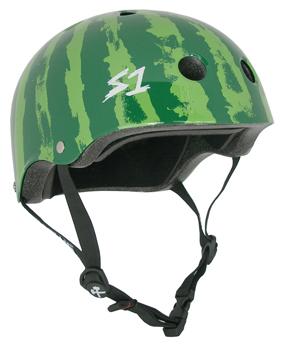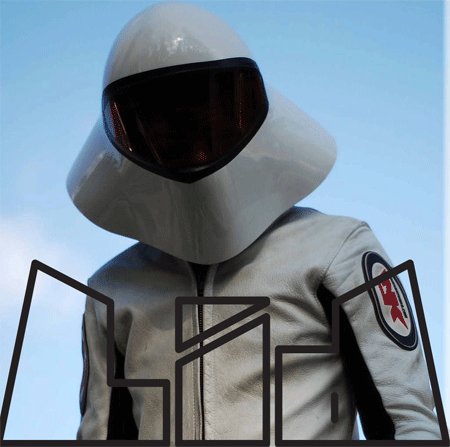Longboarding safety
Helmets and gear
I’ve always signed off at the end of my articles with the phrase, “WEAR A HELMET”. I mainly say this to encourage general safety. I wouldn’t want anyone crashing into the ground or into a tree and becoming paralized after reading my articles, would I? So, in this article, I will discuss different helmets and their uses. Also included are pads.
- The Classic Half-Shell

(Pictured: Watermelon S1 Lifer)
This is a classic half-shell helmet. Helmets like these are widely available in pretty much every sports store ever, whether it be your local one or a big-name store at your mall. They’re usually available in a huge selection of colors and styles, but they all accomplish one thing: comfort and convenience. The thing about these half-shells are that they are very good for pretty much every low-speed application, whether it be freeride, or cruising. There are light-weight models which you can put on your head and forget about, but there are also very heavy-duty ones that you can take down a hill. They also boost your confidence as you don’t have to be very scared about falling, as you won’t get badly hurt.
For longboarding, make sure that the helmet you buy has a hard EPS foam, with skateboarding certifications such as CSPC or CE-1078.
(Pictured: Predator DH-6 Full-face)
- The Full-face
(Insert picture of a full-face, Predator dh-6)
This is the downhill longboarding full-face helmet, engineered for aerodynamics and full head protection. The primary difference between a half-shell and a full-face is the protection it offers to the chin. Obviously, a half shell will not protect your jaw or your chin from any kind of impact from below, and especially if you are going downhill, an impact from below can really mess up your face. For those high speed applications, a full-face is good.
These full-face helmets can be quite expensive. In the case that you don’t particularly have the cash for a downhill helmet, a regular sub-$100 BMX helmet will do. They are a little heavier, but they’ll get the job done. Make sure the BMX helmet has CSPC and CE-1078 certifications for longboarding, as anything else has the chance of failing. As well, insurance companies will watch out for whether you had a good helmet on or not.

(Pictured: G-form safety pads)
- The Safety Pads.
(Insert pic of safety pads, G-form)
These are longboarding safety pads. They’re great for saving the skin on your joints when you fall! I’ve always found these to be more of a confidence booster than safety, since they safe your pants and skin from getting shredded when you fall, but they have very real uses. Personally, I’ve always gone with my front leg with a knee pad, just one. This is because my front knee is the most likely to hit the ground when I fall, and that will save me most of the time. If you are skating for the first time, use full pads, and always wrist pads or slide gloves.
WEAR A HELMET. Ryan L. Longboarder.
